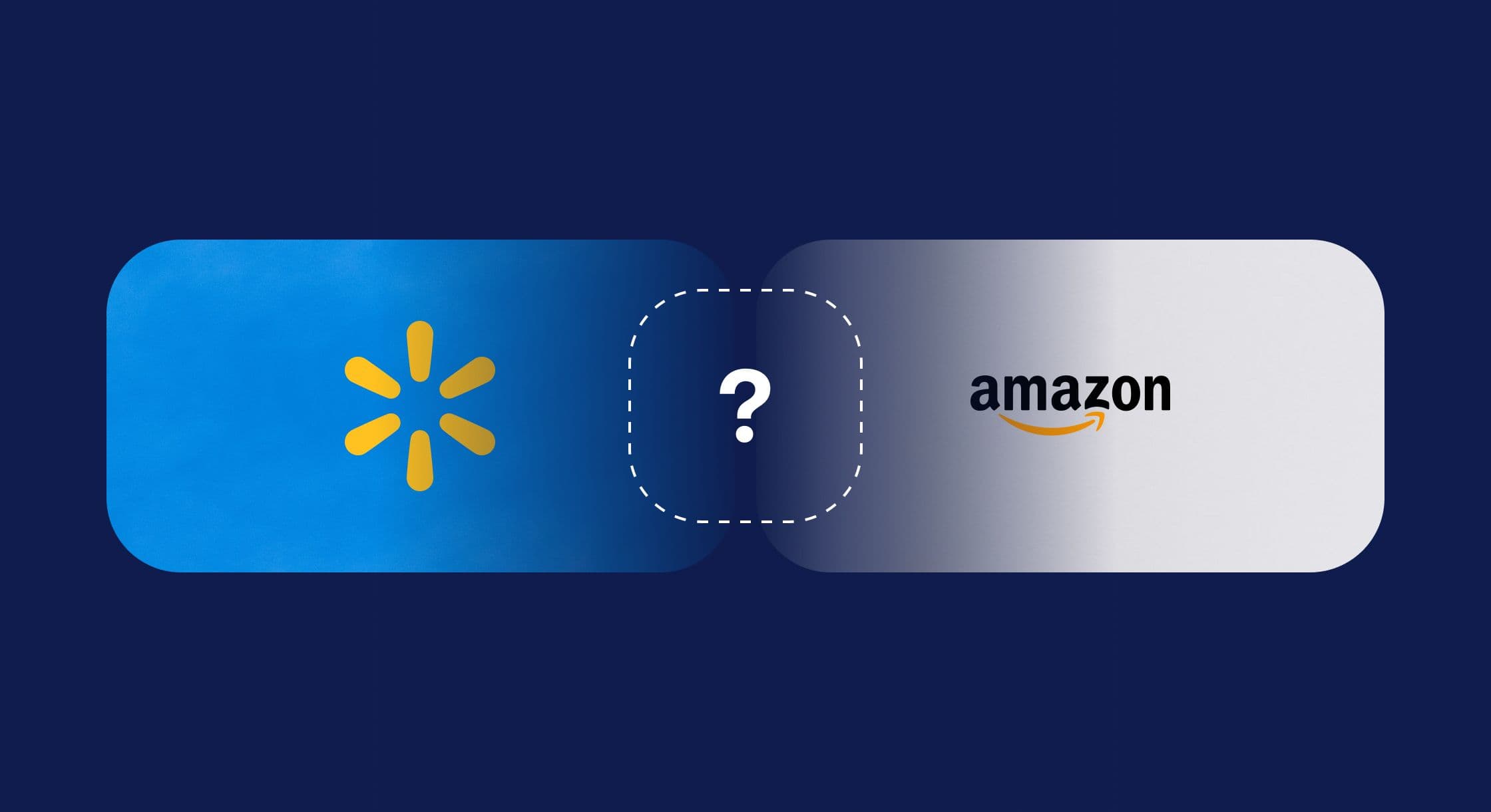/WFS vs FBA: Which is Better for Sellers?

WFS vs FBA: Which is Better for Sellers?
For e-commerce sellers, fulfillment plays a critical role in business success. Walmart Fulfillment Services (WFS) and Amazon Fulfillment by Amazon (FBA) are two major options available for sellers who want to streamline logistics, improve shipping speed, and enhance customer experience. While both services offer extensive fulfillment capabilities, they cater to different audiences and have distinct benefits and drawbacks.
In this article, we will compare WFS and FBA across multiple factors, including seller costs, eligibility requirements, shipping speed, customer service, returns, and overall profitability. By the end, you will have a clearer understanding of which fulfillment service is better suited for your e-commerce business.
Purpose of WFS and FBA for E-commerce Businesses
Walmart Fulfillment Services (WFS) and Amazon Fulfillment by Amazon (FBA) are two popular fulfillment services designed to help e-commerce businesses streamline their order fulfillment process. The primary purpose of these services is to enable sellers to outsource their inventory storage, packaging, shipping, and customer service to a third-party logistics provider. By leveraging the expertise and resources of WFS and FBA, e-commerce businesses can focus on growing their sales, improving customer satisfaction, and increasing their competitiveness in the market.
Walmart Fulfillment Service (WFS) allows sellers on Walmart Marketplace to utilize Walmart’s logistics network for storing, picking, packing, and shipping their products. This service ensures that sellers can meet the high standards of Walmart’s customer base, providing fast and reliable shipping options that enhance customer satisfaction.
On the other hand, Amazon Fulfillment by Amazon (FBA) offers a robust fulfillment solution where sellers send their inventory to Amazon’s fulfillment centers. Amazon then takes care of the entire fulfillment process, including storage, packing, shipping, and customer service. This allows sellers to benefit from Amazon’s extensive logistics network and the trust that customers place in Amazon’s fast and reliable shipping.
Benefits of Using a Fulfillment Service for E-commerce
Using a fulfillment service like WFS or FBA can bring numerous benefits to e-commerce businesses. Some of the key advantages include:
- Increased Efficiency: Fulfillment services can help businesses automate their order fulfillment process, reducing the time and effort required to pack and ship orders. This allows sellers to focus on other critical aspects of their business, such as marketing and product development.
- Improved Customer Satisfaction: By providing fast and reliable shipping, fulfillment services can help businesses improve customer satisfaction and loyalty. Customers are more likely to leave positive reviews and make another purchase, when they receive their orders on time and in good condition.
- Reduced Costs: Fulfillment services can help businesses reduce their shipping costs by leveraging the economies of scale and better negotiated rates with carriers. This can result in significant savings, especially for small to medium-sized businesses that may not have the same bargaining power as larger companies.
- Scalability: Fulfillment services can help businesses scale their operations quickly and efficiently, without the need for significant investments in infrastructure and personnel. This is particularly beneficial for businesses experiencing rapid growth or seasonal fluctuations in demand.
By outsourcing their logistics to WFS or FBA, e-commerce businesses can streamline their operations, reduce costs, and enhance customer satisfaction, ultimately leading to increased sales and profitability.
Product Restrictions and Requirements for WFS and FBA
Walmart and Amazon both have certain product restrictions and requirements that sellers must comply with. Some of the key restrictions and requirements include:
- Product Compliance: Products must comply with marketplace policies and guidelines, including those related to product safety, quality, and packaging. Sellers should familiarize themselves with each marketplace's guidelines to ensure their products meet the standards.
- Product Condition: Products must be in good condition and meet quality standards. This means that items should be free from defects, damage, and signs of wear. Ensuring high-quality products can help sellers maintain a positive reputation.
- Product Packaging and Labeling: Products must be properly packaged and labeled for shipping. This includes using appropriate packaging materials to protect items during transit and ensuring that labels are clear and accurate. Proper packaging and labeling can help prevent shipping delays and reduce the risk of returns and negative feedback.
- WFS Packaging and Labeling: Be sure to review the WFS product packaging guidelines before committing to sell your product on Walmart. Learn about acceptable WFS labels and how to download them from Seller Center.
- FBA Packaging and Labeling: Before sending products to fulfillment centers, it's important to read the FBA product packaging requirements to understand what is suitable for the fulfillment by Amazon process and what is not. Amazon also offers a Ships in Product Packaging (SIPP) program, which qualifying FBA orders are shipped in the packaging provided by the manufacturer. By applying a shipping label directly to a product’s original package, the seller can significantly reduce waste and its carbon footprint.
By adhering to the marketplace requirements and understanding the product packaging guidelines for sellers, you can ensure your items are eligible and meet the high standards expected by WFS and FBA.
Overview of Walmart Fulfillment Services (WFS)
Walmart Fulfillment Services (WFS) is Walmart’s in-house fulfillment network that allows third-party sellers on Walmart Marketplace to store, pick, pack, and ship their products using Walmart’s logistics network. Similar to FBA, WFS offers expedited shipping, competitive pricing, and customer service support.
The logistics and fee structures associated with using a Walmart fulfillment center are determined based on product size, weight, shipping methods, and storage duration. Sellers can use a WFS calculator to estimate these fees, which include both fulfillment and storage costs, providing a comparison to Amazon's FBA.
Key Benefits of WFS:
- Access to Walmart Marketplace: Sellers gain exposure to Walmart’s massive customer base.
- Fast Shipping: Orders qualify for Walmart’s Two-Day and Three-Day Delivery programs.
- Customer Service: Walmart handles customer inquiries and returns.
- Simplified Pricing: No additional charges for pick, pack, and ship—WFS fees (pillar link) are based on weight and dimensions.
- Less Competition: Walmart Marketplace has fewer third-party sellers compared to Amazon.
Drawbacks of WFS:
- Eligibility Restrictions: Only sellers with a Walmart Marketplace account can use WFS.
- Limited International Support: WFS primarily focuses on the U.S. market.
- Smaller Logistics Network: Compared to Amazon, Walmart’s fulfillment network is still growing. However, utilizing WFS can lead to faster shipping, increased product visibility, and improved customer satisfaction on Walmart's online marketplace.
Overview of Fulfillment by Amazon (FBA)
Amazon’s Fulfillment by Amazon (FBA) is one of the most robust fulfillment solutions available. Sellers send their inventory to Amazon’s fulfillment centers, and Amazon takes care of storage, packing, shipping, and customer service.
Key Benefits of FBA:
- Prime Eligibility: Products qualify for Amazon Prime, boosting visibility and sales.
- Global Reach: Amazon operates in multiple countries, enabling international sales.
- Scalability: Amazon’s vast logistics network handles large order volumes efficiently.
- Customer Trust: Buyers trust Amazon’s fast shipping and customer service.
- Multi-Channel Fulfillment (MCF): Amazon MCF fulfills orders from other sales channels beyond its marketplace.
Drawbacks of FBA:
- Higher Fees: Storage fees, fulfillment fees, and additional costs for long-term storage can eat into profits.
- Intense Competition: Millions of sellers use FBA, making it a highly competitive marketplace.
- Strict Storage Limits: Amazon frequently changes inventory storage limits, affecting sellers’ stock management.
Fulfillment Fees Comparison
When comparing the logistics and fee structures, Amazon's fulfillment centers offer a comprehensive service, but Walmart Fulfillment Services is often highlighted for its cost-effectiveness and simplicity, making it an attractive option for sellers. WFS is particularly cost-effective for heavier items and offers a more straightforward process for sellers.
Both WFS and FBA charge fulfillment fees, but the structures differ. Below is a high-level comparison of the costs associated with each service.
WFS Pricing:
- Monthly Storage Fees: $0.75 per cubic foot (standard) and $1.50 per cubic foot (peak season). Walmart considers the standard season as January through September, and the peak holiday season as October to December.
- Long Term Storage Fees: Items stored for more than 365 days will incur a fee of up to $7.50 per cubic foot per month.
- Standard Fulfillment Fees: Based on item weight and dimensions (starting at $3.45 for small items under 1 lb).
- Big and Bulky Fulfillment Fees: For items that weigh 150 - 500 lbs. or are larger in dimensions. The Big and bulky surcharge is straightforward: $155 base fee per unit + $0.80 per lb. > 90 lb.
- Returns Processing Fees: The return processing fee (formerly known as return shipping fee) is based on shipping weight and starts at $4.70 for items 1 lb or less.
FBA Pricing:
- Monthly Storage Fees: FBA monthly storage fees start at $0.78 per cubic foot (standard) and $2.40 per cubic foot (peak season). Amazon typically considers the standard season as late January through early October, and the peak holiday season as mid-October to mid-January.
- Aged Inventory Surcharge: This fee (previously known as the long-term storage fee) is charged on inventory units stored in Amazon fulfillment centers for more than 180 days. The fee is based on a tiered structure starting at $0.50 per cubic foot for items in fulfillment centers for 181 days, and the fee increases by month. For 365 days or more, the cost is $6.90 per cubic foot or $0.15 per unit, whichever is greater.
- Standard Fulfillment Fees: FBA fulfillment fees are also based on weight, but have many more pricing tiers than WFS. The fee is typically only lower than WFS, when fulfilling very light weight orders, up to 10 oz. For example, FBA fees start at $3.06 for small items under 2 oz, while WFS fees are $3.45 for all items <1 lb.
- Large and Bulky Fulfillment Fees: Amazon has more pricing tiers than WFS for large and bulky items but it is typically more costly than the WFS Big and bulky fee, depending on your product's weight. For example, the FBA fulfillment fee for an item 50 - 70 lbs. is $40.12 + $0.75/lb for every pound above 51 lb, while the WFS fulfillment fee for a 50 - 70 lb. item $17.55 + $0.40 for each lb. over 51 lbs. With FBA, when the item weight is over 150 lbs, the base fee is $194.95 + $0.19/lb per interval above 151 lb, whereas with WFS, the fee is $155 base fee per unit + $0.80 per lb. > 90 lb.
- Returns Processing Fees: This fee is for all items (except apparel and shoes) with a high return rate above a specific threshold to each product’s category. The fee is applied per unit, based on the product’s size tier and shipping weight.
Key Takeaway: WFS generally has lower storage and fulfillment fees, and a simpler pricing model, making it cost-effective for certain sellers. FBA, while more expensive, offers global reach and Prime eligibility, making it appealing to high-volume sellers.
Referral Fees by Category
Whether you sell via WFS or FBA, you will pay a commission based on the sales price for each product you sell. This commission is known as the Referral Fee and it is determined by the category of the item. Since the referral fee percentage can vary between WFS and FBA, it’s important to understand any difference in fees for the categories of the products you sell. Below are a few examples for comparison sake.
WFS Referral Fees:
- WFS referral fees vary by category, typically ranging from 5-15%.
- Apparel with a sales price over $20, referral fee is 15%
- Computers category referral fee is 6%
- Musical instruments category referral fee is 12%
FBA Referral Fees:
- FBA referral fees also vary by category, generally ranging from 8-20%.
- Apparel with a sales price over $20, referral fee is 17%
- Computers category referral fee is 8%
- Musical instruments category referral fee is 15%
Key Takeaway: WFS and FBA have similar referral fee structures, but they vary by category. Depending on the types of products you sell, you may be able to save a few percentage points on the referral fee with WFS, which can help your profit margin.
Shipping Speed and Customer Expectations
Both services provide fast shipping options, but Amazon FBA has a more established reputation for quick and reliable delivery.
WFS Shipping:
- Two-Day and Three-Day Shipping options available.
- Covers most of the U.S., but still expanding.
- Walmart Plus members receive free shipping benefits.
FBA Shipping:
- Amazon Prime offers free Two-Day and Same-Day delivery.
- Amazon FBA's extensive network ensures faster deliveries across a broader range of locations.
- Better support for international shipping.
Key Takeaway: FBA offers superior shipping speed and wider coverage, making it the better choice for sellers who prioritize fast deliveries.
Returns and Customer Service
Handling returns efficiently is crucial for e-commerce sellers. Here’s how WFS and FBA compare in this aspect:
WFS Returns:
- Walmart handles customer service and returns.
- Returns are processed through Walmart stores or return shipping.
- Fewer return-related fees compared to Amazon.
FBA Returns:
- Amazon offers hassle-free returns with its customer-first policy.
- More flexible and automated return processes.
- FBA charges return processing fees in some categories.
Key Takeaway: WFS has a simpler return structure with fewer fees, but Amazon's well-established return policy and automation offer convenience.
Marketplace Competition and Sales Potential
The competition level and audience reach significantly impact sales potential for sellers. Brands utilizing Amazon's fulfillment services can qualify for Amazon Prime deals, highlighting the promotional opportunities these deals offer during events like 'Prime Day.' This can lead to increased visibility and access to a broader audience through participation in these exclusive promotions.
WFS Marketplace:
- Walmart's online marketplace is less saturated than Amazon.
- Sellers face fewer competitors in most product categories.
- Customers perceive Walmart as a cost-effective shopping destination.
FBA Marketplace:
- Amazon has a massive customer base but is highly competitive.
- Prime members are more likely to purchase from Amazon FBA sellers.
- Higher sales volume potential but also greater competition.
Key Takeaway: Walmart Fulfillment Services is a great choice for sellers looking for lower competition, while FBA provides higher sales potential at the cost of greater competition.
Which One Should You Choose: WFS or FBA?
The choice between WFS and FBA depends on your business goals, budget, market strategy, and the product categories you sell in. Walmart WFS is cost-effective for sellers and has a more straightforward application process, though it may not be as competitive as Amazon's landscape. FBA offers many advantages and can be very lucrative for sellers who can handle the higher fees.
Choose WFS If:
- You want access to Walmart’s growing marketplace with lower competition.
- You prefer lower fulfillment fees and simpler pricing.
- You sell heavy or large items that would benefit from lower fulfillment costs.
- You primarily sell in the U.S. and don’t require international fulfillment.
- You want Walmart’s customer service to handle returns efficiently.
Choose FBA If:
- You need international fulfillment and Prime eligibility for higher sales volume.
- You sell high-turnover products that can absorb Amazon’s higher fees.
- You sell items that can benefit from Amazon exclusive sales events, such as Prime Day and Prime Big Deal Days.
- You want access to a global customer base and a well-established logistics network.
- You need flexibility in fulfilling orders from multiple sales channels.
Consider Multi-Channel Fulfillment: Use Both WFS and FBA
Some sellers use both WFS and FBA to maximize their reach across different platforms.
“While Amazon FBA dominates eCommerce fulfillment, Walmart Fulfillment Services (WFS) is rapidly gaining traction with competitive fees and fewer storage restrictions. Sellers who diversify across both platforms can capitalize on Walmart’s growing marketplace while leveraging Amazon’s customer base for volume.” - Tom Wicky, Co-Founder, MyFBAPrep
Conclusion
Both Walmart Fulfillment Services (WFS) and Fulfillment by Amazon (FBA) have unique advantages. WFS is ideal for sellers looking for a less competitive marketplace with lower fees, while FBA is best for those wanting to scale quickly with access to Amazon’s massive customer base and Prime shipping benefits.
Ultimately, the best choice depends on your business model, target audience, and budget. By understanding the strengths and weaknesses of each fulfillment service, you can make an informed decision that drives long-term success for your e-commerce business.


